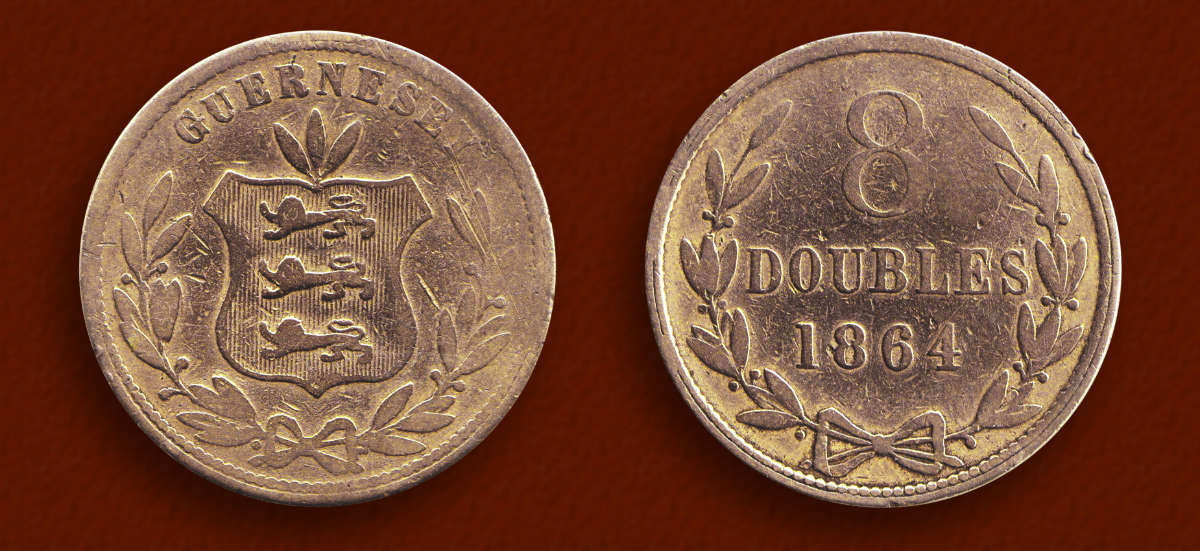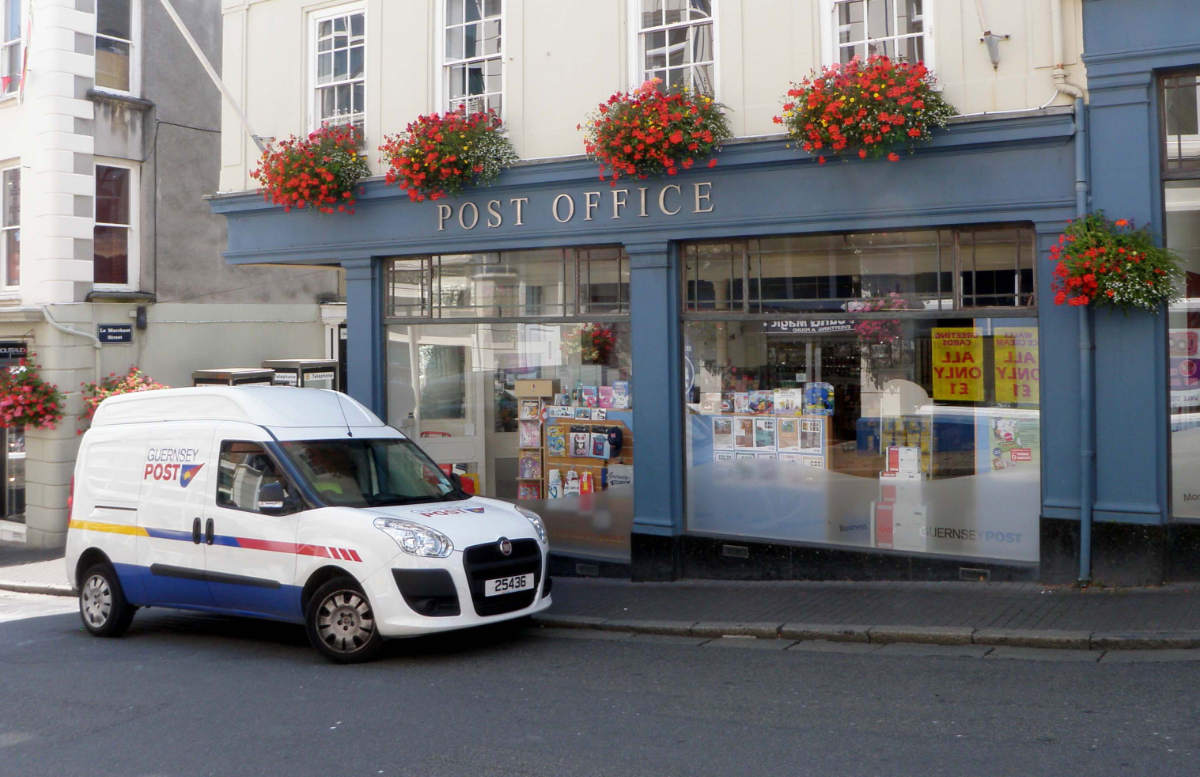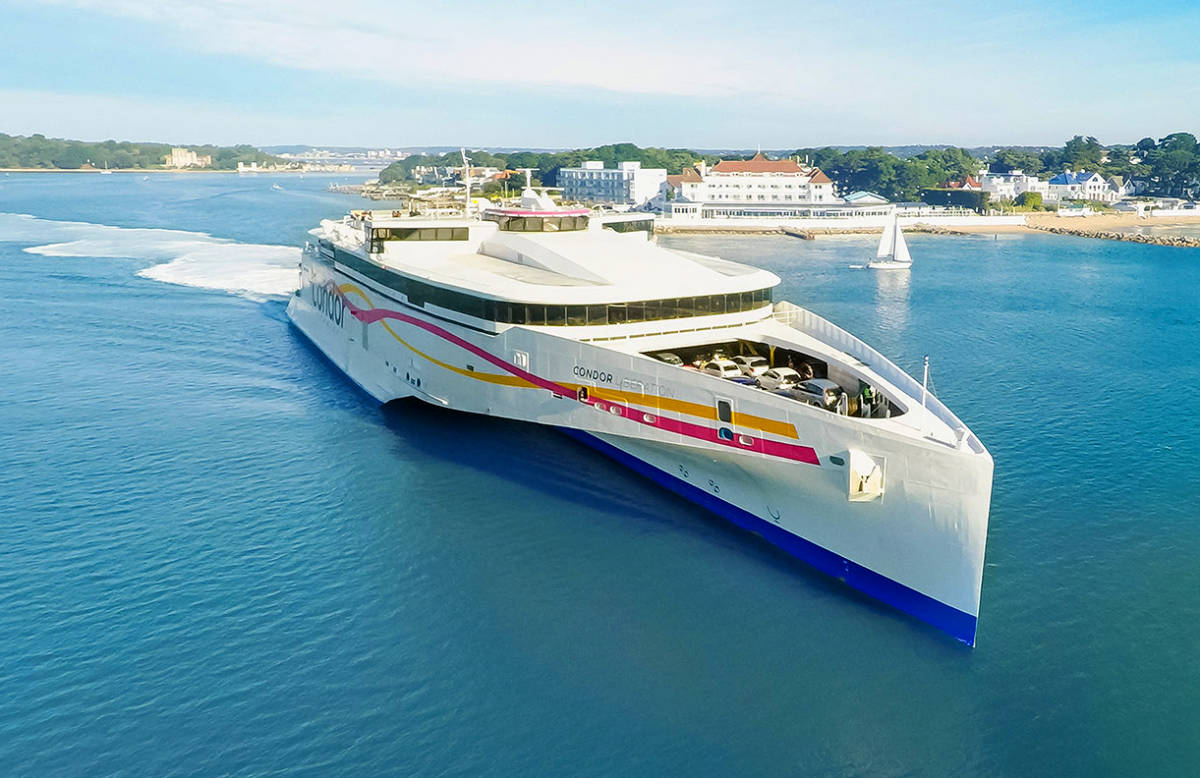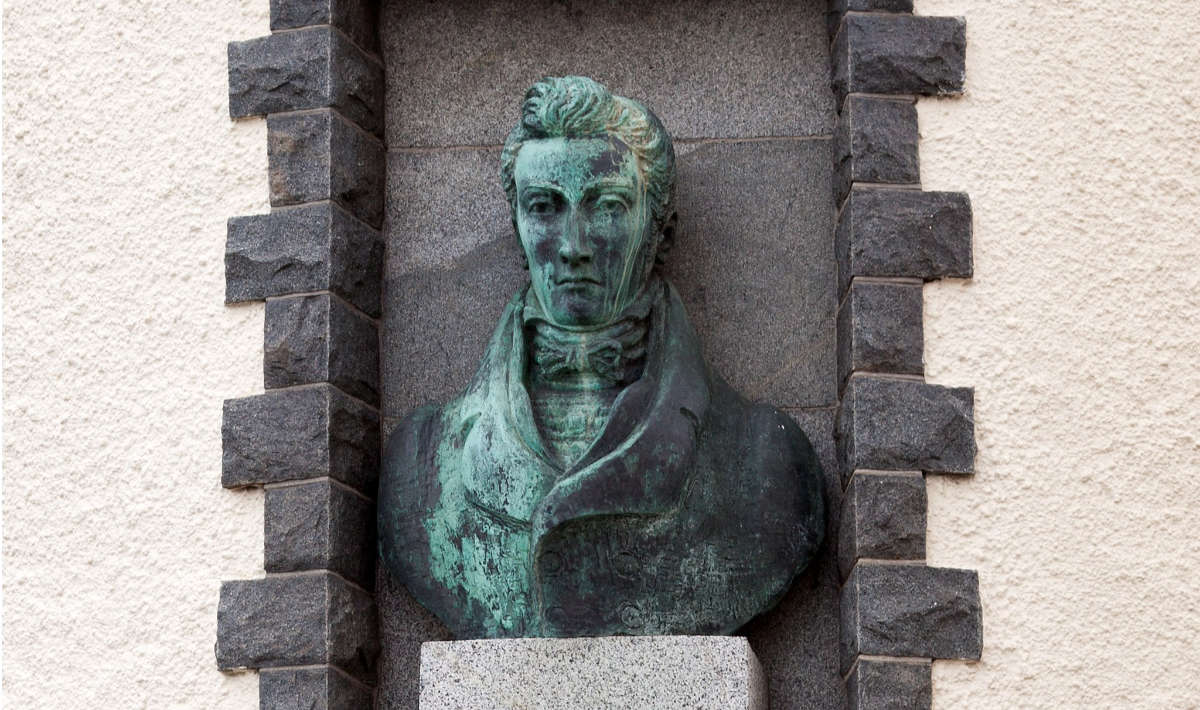Guernsey and France tackle the Amoco Cadiz oil spill
British and French tugs joined forces to save the Channel Islands – and some French beaches – from a 40-mile long oil slick.
When the Amoco Cadiz ran around off the coast of Brittany in mid-March 1978, she split in three and spilled almost 220,000 tons of light crude oil. No doubt, the Torrey Canyon disaster, which had happened just eleven years earlier, would have been in Guernsey residents’ minds as they watched news of the wreck on TV.

History repeating
Like Amoco Cadiz, the Torrey Canyon was a Liberian-registered tanker. It ran aground off Cornwall and spilled 120,000 tons of crude oil – 100,000 tons less than the Amoco Cadiz. Much of Torrey Canyon’s load washed up on Guernsey’s beaches. Some of the cleaned oil is still being stored and treated in a quarry on the island.
Where the Torrey Canyon spill caused considerable damage, though, the effect from Amoco Cadiz was relatively light, in part because rough seas helped to break it up.
The slick was eventually more than 40 miles long, and heading for Guernsey and Jersey after the ship went down. Guernsey dispatched boats to tackle it with more than 100 tons of dispersant. Once it had been thinned, it would partly evaporate, leaving less to be physically cleaned up. The dispersant spraying operation continued for a week.
Preventative action
France drew up plans to bomb the tanker, as the RAF had done with the remains of the Torrey Canyon. It was hoped that this would burn off the worst of the leaking oil, and although it would cause considerable immediate pollution the long-term effects would be less serious.
A small amount of oil washed ashore at Petit Port. However, the work of the dispersal teams and the French air force saved Guernsey from the worst possible outcome.
Guernsey adopts Sterling currency
On 30 March 1921, Guernsey adopted Sterling. It had taken the island a long time to align itself with the mainland. Over the previous 300 years, it had used a series of currencies. Some were its own, but many had been aligned with France.
Until 1834 Guernsey used the French Livre. This might sound like common sense, given its location, but France itself had abandoned the Livre in 1795. In 1830 Guernsey introduced its own currency, the Double, which it used alongside the Livre. The Doubles were a series of copper coins, established at 80 Doubles to each French Franc. A Guernsey penny was worth eight Doubles, and 12 Guernsey pennies made a single Guernsey Shilling. A Shilling, was therefore worth either 96 Doubles, or 1.26 French Francs, depending on which currency you were paying with.
If you wanted to settle a bill using a mixture of different currencies, the mental mathematics must have been a challenge, made worse by the fact that the currencies were pre-decimal.

Four years after introducing the Double, Guernsey dropped the French Livre. This would have made things far simpler – had it not introduced the French Franc at the same time. Thus, it was once again operating two currencies side by side, with Doubles and Francs in circulation for the next 100 years.
Switch to Sterling
In the years immediately following the First World War, the Franc was struggling. Its value fell against Sterling, which made British imports to Guernsey considerably more expensive.
In 1921, therefore, the Royal Court issued an ordinance adopting the British pound as Guernsey’s legal currency. It would use it alongside its existing Double coins across Guernsey, Sark, Herm and Jethou. From that date forward, Bank of England notes, any notes issued on Guernsey since the start of March 1921, and any copper coin issued by the States of Guernsey would be valid.
Fortunately, the changeover shouldn’t have been too confusing. The Double to Sterling exchange rate was almost the same as it had been for Francs, with twelve eight-double pieces to each Bank of England shilling.
Photo of Guernsey Double coins by Centpacrr at Wikimedia English
Enemy at the Door comes to the end of its run
ITV’s highly-rated series Enemy at the Door came to an end on 29 March 1980. Over the course of 26 episodes, it had given a lightly-fictionalised account of the German occupation of Guernsey. Filmed by London Weekend Television (LWT), it had started its run at 7.30pm on 21 January 1978 and continued for two full series of 13 hour-long episodes each.
Curiously, although set on Guernsey, it was actually filmed on Jersey.
Fact-based fiction
The first episode opened with the German forces arriving to occupy the island. Although Britain had demilitarised the islands (which they’d omitted to tell the Germans) the occupying forces refused to recognise the fact. Instead, they placed the island under martial rule, at least as an interim measure.
One of the locals attempts to escape to the mainland but fails, and he’s injured in the process. This doesn’t help to build trust between the Germans and the locals. The occupation hasn’t got off to a good start.
There are several points of friction between the characters, and not just between the Germans and locals. The local doctor, who stands up for the Guernsey residents naturally comes up against the Commandant, Dieter Richter. Richter, meanwhile, is a thoughtful and considerate man, which puts him at odds with those who are higher up the chain of command and feel he ought to be more severe.
Enemy at the Door’s famous faces
Enemy at the Door was the first television series to feature Anthony Head. He went on to star in Nescafe adverts, Buffy the Vampire Slayer and Little Britain. One episode also featured John Nettles, who would later return to Jersey to take the title role in the BBC detective series Bergerac.
Guernsey Post Office is established
Guernsey Post Office is older than you think. It was established at the end of March 1794.
The French Revolution was ongoing, it was the year Nelson lost his sight in his right eye and George Washington was still president of the United States.
Yet, to claim that Guernsey had no postal service before this date would be wrong. It’s just that what it did have rather ad-hoc and by no means guaranteed. Without any official arrangement for transporting mail between the mainland and Channel Islands, enterprising individuals set up their own collection points. They handed outgoing mail to the captains of vessels heading to the mainland, and took back any letters arriving on the islands for local distribution.

Pay, pay and pay again
Anyone sending a letter was charged twice. They paid once for the services of the local who liaised with the captain, and again for the captain. There was no fee to be paid to the British postal system, as recipients, rather than senders, bore the cost of mainland mail delivery in the 18th century. In the end, then, sending a letter involved two separate people paying three different parties.
The postal system was formalised on 28 March 1794 through a British Act of Parliament. This established the Guernsey Post Office, with Ann Watson appointed its first postmistress. She operated from her home in St Peter Port High Street.
The existence of an official Post Office gave islanders and mainlanders a degree of confidence that anything they sent would arrive in a timely manner, at a set price. Mail would be conveyed to and from the mainland once a week.
It was almost another sixty years before Guernsey got its first postbox, though, in 1853.
Change, change and change again
Guernsey Post Office became Guernsey Post in 1969 as part of a wide-ranging overhaul of the British postal system. Guernsey Post Ltd was subsequently created in 2001 and awarded a licence to operate in the Bailiwick.
Guernsey Post Office image by Manxruler, released under a Creative Commons Attribution Share-Alike license
Condor Liberation enters service
Condor Ferries created a bit of a fanfare when it introduced Liberation, its brand new trimaran. It spent £50m on what it described as a “state of the art high speed ferry” that would “increase capacity and give our guests a much greater level of comfort”.
In a blog post, Condor said the ferry would be more reliable and able to cope with much higher waves.
Condor configured the craft to carry up to 880 passengers in three different classes, along with 235 vehicles, with a planned service speed of 35 knots (40mph or 64km/h).

Liberation naming competition
The craft had sat idle for four years before Condor bought it, which it did when its licence to serve the Channel Islands was extended through to 2020. It had been built by Austal in Australia under the name Austal 270. When Condor bought it, it briefly renamed it Condor 102 (it’s 102m long), and launched a competition to give it its final name.
More than 7000 people submitted an idea in the hope of winning a year’s free travel, by sea, to and from the islands. The winning name was announced on the dedicated Condor 102 blog and in the Guernsey Press and Jersey Post.
“Liberation” had been suggested by several entrants, as the ship was entering service 70 years after the Channel Islands had been liberated following the occupation. Condor put all the Liberation suggestions into a hat and picked out the winner. It was 49-year-old Guernseyman Clive Davies, who was invited to Poole to see the name being painted onto the ship.
Three-hour crossings
Upon launch, the Bahamas-registered vessel completed its mainland to Guernsey crossings in around three hours, which compared favourably against the seven hours taken by a conventional ferry. However, on its second day of operation, when berthing at St Peter Port in high winds, it struck the harbour and had to be taken out of service for a week.
Passengers were quick to point out that the crossings could also be turbulent, in even fairly small swells.
However, a report prepared for the States of Guernsey and Jersey by Houlder, an independent marine engineering firm, found that the Liberation had no stability issues. It said that it rolled less frequently than a catamaran would (although it may roll to a larger roll angle). Houlder also said in the October 2015 report that damage the vessel had sustained was not uncommon on high speed craft.
Guernsey to UK telephone connection inaugurated
Guernsey’s phone system was up and running by 1898. However, it took until 1931 for Guernsey to be connected to the mainland by telephone.
Until then, there were two ways to send or receive a message. Brief notes could be sent by telegram, but that was charged by the character. Longer missives would go by sea. Guernsey Post Office was established in 1794, but even before that it had been possible to send letters around the island. Anything sent further afield would be put onto one of the regular steamships that sailed between the island and the mainland.
So, when the telephone line back to England was inaugurated on 26 March 1931, it simplified matters greatly. For the first time, it directly connected both Guernsey and Jersey to South Devon. From there, calls could be routed throughout the mainland trunk line system.

Establishing a voice-enabled link over such a distance was quite an achievement, which deserved to be marked in some manner.
The inaugural call was made by the British home secretary, John Robert Clynes to the Lieutenant-Governors of Guernsey and Jersey; who were Lord Ruthven and Major-General Edward Willis, respectively.
Smart marketing
Although they have gone down in history as the first men to speak on the line, that’s not quite the whole story. It had actually hosted its first calls two weeks earlier, on Thursday 12 March, so this was merely ceremonial – or marketing.
What that “official” first call more accurately marked was the moment the line was opened for public, rather than merely official use.
The line itself wasn’t newly-laid, either: it had really just been converted. The hardware linking the islands to the mainland had previously been a telegraph cable, which had been used to send military signals during the first world war.
Guernsey votes for equal age of consent
When asked to vote on equalising the age of consent for gay men, Guernsey’s politicians were unanimous. They dropped it from 18 to 16 on 25 March 2010, bringing Guernsey in line with the rest of the UK. At last, the rules were the same for same-sex for mixed-sex partners.

Long-running issue
It wasn’t the first time they’d been asked to vote on the issue. It had been brought up in 1999 by Deputy Carol Steere when the existing age of consent for homosexual acts had been 21. She had proposed reducing it to 16. However, dropping it five years in one go was seemingly too much for the States at that time. Deputies had instead voted to cut it to 18. British MPs had voted to lower it to 16 in the UK just a few days earlier.
Deputies had been warned after the 1999 vote that not bringing it into line with the age of consent for mixed-gender couples could leave the States in breach of the European Convention on Human Rights.
Another vote on the issue had been tabled in 2007, when Jersey had already equalised its age of consent. However, other business had got in the way and, in the end, there had been no time to hold it. It was therefore 11 years until the issue was properly revisited in 2010. This time, it was the Home Department that had proposed the change.
Plenty of notice
The press and broadcast media started to publicise the upcoming vote at the start of the month. The BBC reported on the reactions from various church leaders, which ranged from full acceptance from the leader of the Methodist Church (“It’s important that people are treated the same regardless of their gender, sexual orientation or racial background”) to disapproval from the Catholic dean who said he “doesn’t go along with it”. The Anglican dean had declined to comment until after the vote.
Both Alderney and Sark soon followed Guernsey’s lead. At the same time as equalising the age of consent, Guernsey’s Deputies lifted the restriction on the number of men who could have sex together.
Famed printer Thomas de la Rue born

The world owes a debt of gratitude to Thomas de la Rue. Born in La Bourg, Forest, he was one of nine children. When he became an apprentice printer in St Peter Port, aged just 10, the course of the rest of his life was set.
Newspaper publisher
De La Rue founded a newspaper, Le Publiciste, with Tom Greenslade, but the two fell out. De La Rue left and set up his rival, Le Miroir Politique, in February 1813. It published once a week, at 7am every Saturday, from offices at 184 Lower Pollet, and delivered throughout Town.
Within five years, following the death of his father, his marriage, and the birth of his first son, Warren, he had moved his family to London. There, he set up a shop manufacturing and selling straw hats, but his love of print and paper soon took over. He first started binding books, then making paper and, finally, printing playing cards.
De la Rue introduced several new printing methods, and was granted a patent for “certain improvements in making or manufacturing and ornamenting playing cards”. So great were these advanced that he became known as the father of the English playing card. Production increased almost three-fold over ten years to reach more than quarter of a million packs a year, all printed at speed on a steam-driven press.
Hard times
It all came crashing down in the depression of the late 1830s. De la Rue was arrested as a debtor and had to be bailed out by his creditors who, in return, received one of his patents.
Nonetheless, de la Rue’s firm was recognised as an expert printing operation, so it’s perhaps no surprise that it won contracts to print stamps (in 1855) and, eventually, bank notes (initially, in 1859, for Mauritius). It’s with this latter realm that the name remains closely associated. The firm still prints bank notes and cheque books, and its marque can also be found on some bank cards.
Thomas de la Rue died in 1866, with much of the company’s activity carried on by his sons.
Picture of Thomas de la Rue memorial by Unukorno (Own work) [CC BY-SA 3.0], via Wikimedia Commons.
Guernsey nurse Elizabeth Lincoln elected to the States
Guernsey’s election of March 1970 brought more women into the States of Deliberation than ever before. Sadly, though, they still represented only six of the 33 winning candidates. The rest – along with the majority of the local parish representatives – were still men.
Elizabeth Lincoln was successful in winning a St Peter Port seat, where she attracted 1853 votes. It was a resounding victory. As The Times reported two days later, under the headline “Personality counts in Guernsey”, “the heavy reform policies advocated by the two local Labour Group candidates… polled only 573 and 522 votes each”.
Elizabeth Lincoln: more than just a deputy
A nurse, who had been born in Norwich, Elizabeth Lincoln moved to Guernsey in the 1950s. She started to research cancer on the island around five years later and set up Prop, which supports Guernsey cancer patients and their families.
For a while, she was chair of the Guernsey branch of the Royal College of Nursing and vice president of St John’s Ambulance.
Her research involved collecting 30,000 samples from over 11,000 Guernsey women. These have been used for decades since in diagnosing the causes and possible treatments for cancer. Almost 50 years after the first samples were gathered, they were still being worked on at the University of Southampton by scientists hoping to devise a simple blood test for breast cancer.
Her work in this area earned her an MBE for services to cancer research in 1968.
A versatile politician
During her time as a politician, she served on numerous boards. Over 18 years, she was the president of the housing authority and the board of Guernsey Prison. Outside of politics, she showed her commitment to her adopted home through her membership of both the National Trust of Guernsey and La Societe Guernesiaise.
Elizabeth Lincoln, known to many as Binnie, died at Les Bourgs hospice, aged 79, in August 2003.
Alderney arrest sparks a “riot”
An arrest on Alderney sparked the first riot anyone could remember.
Reporting the disturbance a couple of days later, The Times said the arrest was merely the spark that ignited something far bigger. To understand the real reasons you’d need to look back to the Second World War. Alderney had been evacuated, and when the residents returned to find many homes almost derelict, many blamed Guernsey residents for looting them.
Guernsey was put in charge of policing Alderney and, says the Times, “lingering animosity and the fact that Alderney people have no right of residence in Guernsey have deterred them from joining the police ever since”.
So, when an Alderney man suspected of drink-driving was arrested by two Guernsey policemen, up to 30 people tried to free him. Some described their support as a riot.
Local support
The Scotsman reported that “He tried to run away, urged on by his friends, but the officers held him and in the tussle that followed, one allegedly hit him with a baton. They then followed the officers to the nearby police station, 200 yards away.”
The police called in reinforcements, both from Guernsey (which didn’t arrive until the morning), the resident local police and the fire brigade. A fight broke out and several people were injured.
The Telegraph wrote that in the hour-long fight, which began at 1am, “the mob pelted the police station with stones and other missiles and one of the island’s four policemen used CS spray”
Six more locals were arrested, and the Alderney States warned that if convicted they could expect a custodial sentence.
A riot, or just a disturbance?
A reporter from The Guardian visited Alderney to report on the aftermath and found that, on the whole, the locals believed it had been blown up to more than it actually was. Some described it as a “melee”, and some said the police were “heavy-handed” and “over-reacted”.
